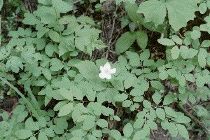
Biology
Biology Lab AP Investigation #11: Transpiration

Lab Exercise
Biology Lab: Plant Transport and Transpiration
AP Exam preparation -- Doing the AP version of this lab:
Please read through the 2012 AP Biology Lab Manual, Investigation #11: Transpiration. This lab presents very few problems for students to acquire materials. However, if you are able to arrange to perform the AP lab with a local homeschool group or a biology tutor, then you should do so.
Alternative Transpiration Observation option #1
If you are actually unable to carry out the measurements for Investigation #11, you may directly observe plant transpiration using the method below.
Goal: Gross observation rate of plant transport
Materials and Equipment
- 2 stalks of celery
- Blue and red food coloring
- Two jars
- Clean water source (use distilled water if you want to do any of the alternate possibilities).
Procedure
- Split both stalks of celery half way up.
- Fill each jar with water. Color one jar with red food coloring, one with blue food coloring.
- Place one side of each split stalk in each jar.
- Check the stalks at 15 minute intervals and note when the leaves turn color.
Alternate Possibilities
You could repeat this experiment several times, using fresh celery each time, but vary the solution in the red jar:
- Add table salt to make a salt concentration.
- Add sugar to make a sugar concentration
- Use mineral water.
- Use vinegar.
If you notice a difference in absorption between your pure water source and the solution, you may want to vary the concentration of the solution to see what affect concentration has on the rate of absorption.
Alternative Transpiration Observation option #2
Goal: Close measurement of the rate of plant transport
Materials and Equipment
- Bush Bean plant (from Field lab #6)
- plastic Tygon tubing, 16-18"
- Stand or clamps to hold the tubing in a U-shape
- Pipette (0.1-mL, graduated)
- Clean water source (use distilled water).
Procedure
- Push the narrow end of the pipette into one end of the tubing. Secure the pipette end in a clamp with the open end up.
- Bend the tubing in a U, secure the end, and fill the tubing with distilled water.
- Place the cut stem of the bush plant in the open end (the one without the pipette), as shown in the discussion at The Biology Place website.
- Using your room conditions (record temperature if possible), leave the plant alone for 10 minutes, then at 10 minute intervals, take 4 readings of the level of water in the pipette.
- Cut the leaves off of the plant and blot them dry, then weigh them.
- Estimate the total leaf surface of the plant.
Alternate Possibilities
Repeat this experiment at least once, using different bean plants in one of the following treatments:
- put the plant under a 100W floodlight 1m away.
- put the plant in front of a fan (1m away) on low speed.
- mist the leaves with a sprayer, then put plastic bags around the plant leaves to keep them humid.
Report
Describe your procedures and equipment.
For the "gross observation", describe your observations of absorption of dye by the celery. Which solutions increased the rate of absorption? Which decreased the rate of absorption over distilled water?
For the "close measurement", determine water loss as change in water level in ml for the intervals, divided by the total leaf surface area.
Plot the values as water loss as a function of time, using different colors for your "control" plot and your "treatment" plot.
Determine the rate of water loss in ml/min for each situation.
Explain why the difference in water loss exists. How does heat or light , air circulation, or humidity affect water loss.
Suggest adaptations that keep the plants from losing water.
© 2005 - 2024 This course is offered through Scholars Online, a non-profit organization supporting classical Christian education through online courses. Permission to copy course content (lessons and labs) for personal study is granted to students currently or formerly enrolled in the course through Scholars Online. Reproduction for any other purpose, without the express written consent of the author, is prohibited.